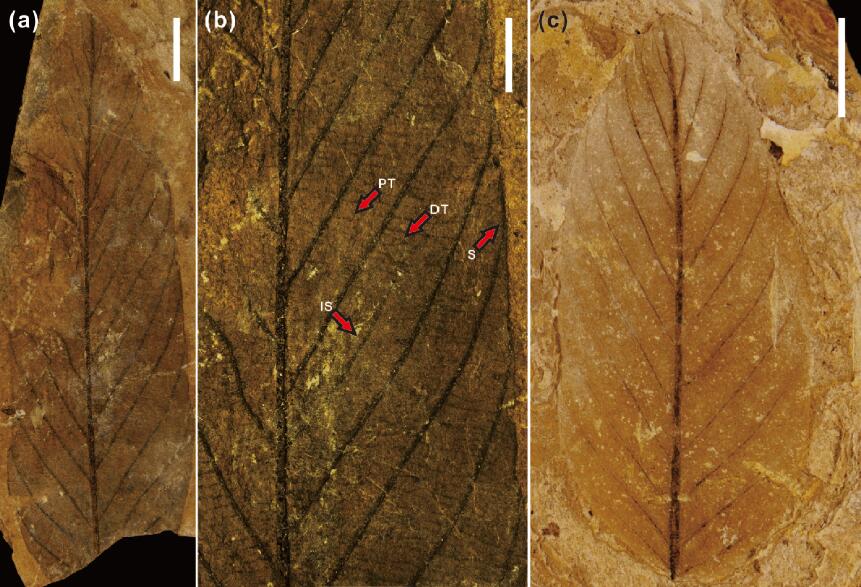Berchemia is a genus of Rhamnaceae with about 32 living species. Berchemia and its affinities, have abundant fossil records. The earliest fossil record of Berchemia and its affinities can be traced back to the latest late Cretaceous of Colombia, where there are fossil leaves assigned to Berhamniphyllum.
Researchers from Xishuangbanna Tropical Botanical Garden (XTBG) recently discovered fossil leaves of Berhamniphyllum in the Upper Eocene strata in the Markam Basin on the southeastern margin of the Qinghai-Tibetan Plateau (QTP).
The newly discovered fossil leaves are characterized by the dense secondary veins on the upper portion of the blade, which is distinct from other affinities. The researchers assigned the fossil leaves to a new species and named it as Berhamniphyllum junrongii, to dedicate to Chinese paleobotanist Prof. TAO Junrong for her significant contributions to the Cenozoic Paleobotany of China and pioneering work on Markam flora.
The new fossil species has been published in Science China Earth Sciences.
“It represents the earliest fossil record for the Berchemia Complex in Asia”, said Prof. ZHOU Zhekun, first author of the study.
The fossils have different leaf traits from that of Cornus especially in secondary venation, and instead, share large amount of leaf traits with that of genera from the tribe Rhamneae, including Berchemia, Berchemiella, Karwinskia and Rhamnidium.
The new fossils indicated that the Berchemia Complex had already arrived at the south-eastern margin of the QTP in the late Eocene. Based on speculation on the fossil record, the Asian Berchemia Complex dispersed from North America to East Asia via the Bering Land Bridge. In the Miocene, the Berchemia Complex migrated out of the QTP and subsequently dispersed to Yunnan and Shandong provinces of China and Japan.
“As the Berchemia Complex gradually evolved, modern Berchemia came into being, and this continued to develop to form the present distribution pattern”, said Prof. ZHOU Zhekun.
Contact
Prof. ZHOU Zhekun Ph.D
Key Laboratory of Tropical Forest Ecology, Xishuangbanna Tropical Botanical Garden, Chinese Academy of Sciences, Mengla, Yunnan 666303, China
E-mail: zhouzk@xtbg.ac.cn

Fossil leaves of Berhamniphyllum junrongii (Images by ZHOU Zhekun)

